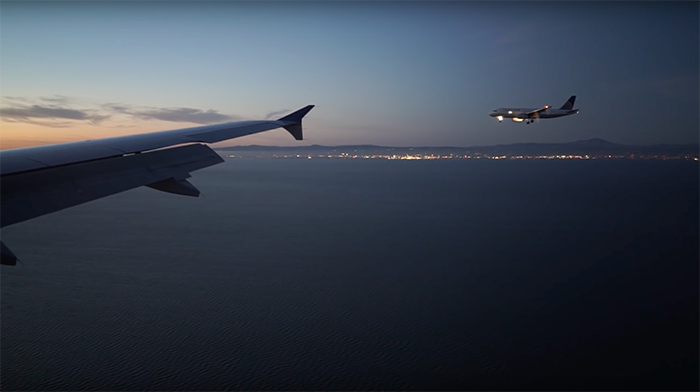In a continuation of our deep dive into different airspace categories we come to Class B or “Bravo” airspace. To see the other types of airspace and get an overview of each check out my airspace explained post.
The simplest definition of Class B airspace is the area surrounding the nation’s busiest airports. At the time of writing this article, there are 37 Class B’s in the United States. However, 12 of them do not allow operations by pilots with less than a private pilot certificate.

Identifying
From a side view the airspace often resembles an upside down 3 tiered wedding cake.
On VFR (visual flight rule) maps Class B is designated by a solid blue circle with two progressively smaller circles around the airport location.

IFR maps show Class B as a light blue shaded circle.

Each airport has different specifications on the shape and size of the Class B airspace. The general rule, however, for lateral dimensions are:
- The outer limits will not exceed 30 nautical miles from the primary airport
- The radius will usually be divided into 3 concentric circles with one at 10 nautical miles, one at 20 nautical miles and the outermost at 30 nautical miles from the center.
- Each area may be divided even further due to other regulatory airspace or terrain.
The general rules for vertical limits are:
- Extends from the surface to 10,000’ MSL
- The floor of the area between the 10 nautical mile and 20 nautical mile ring is decided based on a 300 foot per nautical mile gradient.
- The floor of the area between the 20 nautical mile and 30 nautical mile ring is normally between 5,000 and 6,000 feet above airport elevation.
Each Class B is also surrounded by a ‘Mode C Veil’ that is 30 NM from the primary airport. ANY plane inside this veil, regardless of penetrating Class B airspace is required to have a Mode C equipped (and functioning) transponder.
The Mode C veil is designated by a solid magenta line surrounding the airspace on a VFR chart. IFR charts use a thin blue line surrounding the shaded Class B.
Regulations
The second most restricted airspace in the country, Class B has a few additional operating rules than the lower classed airspaces. All operations in the airspace can be found in the
FAR section 91.131.
You must receive clearance to enter Class B airspace. This means that the controller must identify your aircraft by callsign/tail number and tell you you are “Cleared” to a location or to enter the airspace. Usually this will be followed by some set of restrictions. Usually altitude and route for separation and other issues that ATC has to contend with.
“Standby”, “hold” or any other term that is not specifically state “cleared” does not give you clearance to enter the Class B.
Additionally, regulations state that you may not take-off or land in Class B without a private pilot certificate. While some Class B will allow student pilots with the proper sign off, others explicitly do not.
VFR and IFR aircraft are provided sequencing and separation from other aircraft by ATC. This does not remove any responsibility of a pilot to ‘see and avoid’ while flying in the airspace.
Lastly, speed is also restricted to 250 knots inside the airspace and 200 knots below the airspace.
Weather Minimums
3 statute miles and clear of clouds is all that’s required for flying in Class B airspace. This gives ATC the most operating space when dealing with a mix of VFR and IFR pilots with all requiring ATC separation.
Exceptions
As with other airspace, prior authorization by ATC may amend any regulations set for by the FARs. “Unless otherwise authorized by ATC” is written all over the regulations as a way for ATC to make the best decisions to keep the airways safe.
Conclusion
Flying single pilot into and out of Class B can be very daunting, especially for new pilots. A good CFI can give you the training and experience you need to feel confident flying to some of the more populated airports in the country. For my money though, I’d rather fly to one of the smaller satellite airports. I avoid some of the crazy at the larger airports that are more designed for commercial operations.
Have you flown in Class B airspace? Do you have any cool stories or photos to share? Leave them in the comments!






